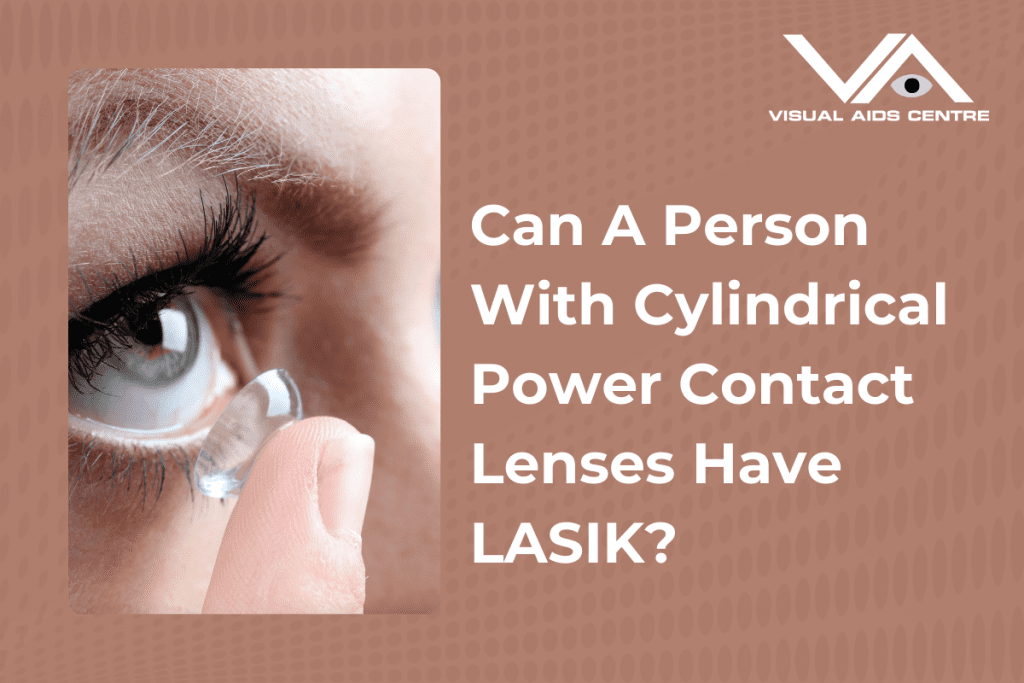Table of Contents
ToggleThe cylindrical power of the eyes is another name for astigmatism. It is a refractive defect in which your cornea lacks symmetry and has a more football-like shape. It alters how light goes through your retina. Resulting in you having hazy and fuzzy eyesight.

Astigmatism
Blurred distance and near vision are common and typically treatable flaws in the eye’s curvature, known as astigmatism. Astigmatism is the outcome when the cornea, the eye’s front surface, or the lens inside the eye has irregular curves. The surface is formed like an egg rather than having a single curve like a spherical ball. The distances blur vision in all directions.
Astigmatism frequently manifests from birth and coexists with either near- or farsightedness. Frequently, it is not severe enough to call for correction. If so, the only available treatments are surgery or corrective lenses.
Why does Astigmatism occur?
With astigmatism, the corneal surface is curved like a bottle gourd or an American football, with a different curvature on each axis. As a result, various light rays that enter the eye are focused at various locations, some in front of the retina and others behind it. It leads to a somewhat warped picture and fuzzy at close and vast distances.
Eye strain and headaches are the two most typical astigmatism symptoms, especially after reading or watching a movie.
How is astigmatism treated?
- Eyewear
Glasses must be made with a particular cylindrical formulation to correct astigmatism, although they don’t look any different from conventional glasses for near- or farsightedness. They have particular benefits and drawbacks, like using glasses for myopia or hypermetropia.
- Contact lenses
Patients who don’t want glasses have customized contact lenses prescribed by doctors. Regular soft contact lenses can correct mild astigmatism, whereas specialized toric soft lenses can treat mild to moderate astigmatism. Rigid Gas Permeable, or RGP, lenses are sometimes needed for astigmatism with more significant levels. It is also possible to utilize hybrid contact lenses with a soft periphery frill and a stiff centre zone. These lenses need to be fitted by a contact lens specialist because they are specially crafted.
- Laser eye surgery
Once thought that astigmatism and cylindrical errors might need to be corrected by LASIK to the same extent as spherical errors. However, LASIK can also correct spherical and cylindrical inaccuracies, as shown by long-term clinical study findings and patient-doctor interactions. The cornea is reshaped during LASIK using the current corneal topography. The LASIK machine is connected to a cutting-edge computer, allowing for exact and accurate programming of each axe.
- Surgery to implant contact lenses (ICL)
ICLs, which work similarly to the lenses used in cataract surgery but without removing the standard lens of the eye, are fragile lenses that are permanently inserted into the eye to improve vision without the need for glasses. Toric ICLS is the best refractive surgery procedure for patients with skinny corneas, high refractive errors, and some stable keratoconus cases. The sphere and cylinder correction ranges for the toric ICL are -3 to -23 D and +1.0 to +6.0 D, respectively. Therefore, your nearsightedness, as well as your astigmatism, can be effectively treated with the Toric ICL.
Will LASIK correct astigmatism?
LASIK surgery is one of the most prevalent eye operations for treating myopia and hypermetropia-related impaired vision. Although treating short- and long-sightedness is standard practice, treating astigmatism is less common, which raises questions regarding whether LASIK can correct astigmatism.
Treatment for astigmatism with LASIK
Yes, in most instances, LASIK can correct astigmatism, and the operation is permanent. Astigmatism is not an illness, like short- and long-sightedness, but a refractive defect. Those with astigmatism are typically given a cylindrical number for their corrective glasses. But LASIK can let you do away with your prescription glasses. A person is eligible for this surgical procedure if their cylindrical number is less than 4. The LASIK laser can then remodel your cornea into a more regular or symmetrical shape to correct blurry vision. For those with a higher number, LASIK is not safe and cannot be relied upon to solve the issue.
The situation gets a little trickier if a person has myopia, hypermetropia, and astigmatism in addition to one or more refractive errors. The doctor measures the power once more and determines whether the eye qualifies for LASIK surgery. You cannot have a successful surgery if the prescription number provided to you is too high for any or both of the faults. Before choosing it as a treatment option, you must be a candidate for LASIK. Cylindrical power in and of itself is not a contraindication to LASIK. Their screening examinations, like corneal topography and a detailed eye exam, determine whether your eyes are suitable for LASIK. If these tests demonstrate that your eyes are appropriate, you can proceed with LASIK.
Despite specific short-term side effects and some hazards, we can treat astigmatism effectively with Lasik. One of the most effective surgical methods for treating astigmatism is LASIK using the excimer laser. It’s time to schedule a consultation with an ophthalmologist to go over safe LASIK treatment choices if you experience blurry vision due to astigmatism.
FAQ’s
Ques1: Can astigmatism get worse after LASIK?
Ans: Along with blurry or distorted vision, irregular astigmatism can occasionally result from LASIK and other procedures. Fortunately, these issues are typically minor and bearable for most people who experience vision impairment following refractive surgery.
Ques2: Which is better for astigmatism: LASIK or a smile?
Ans: LASIK and PRK (photo-refractive keratectomy) can also treat farsightedness in addition to refractive errors brought on by nearsightedness, astigmatism, and some higher-order aberrations, whereas SMILE only treats nearsightedness and astigmatism. A relatively new option for refractive surgery is SMILE.
Ques3: Which is better for astigmatism: LASIK or a smile?
Ans: LASIK and PRK (photo-refractive keratectomy) can also address farsightedness and refractive defects brought on by nearsightedness, astigmatism, and some higher-order aberrations, whereas SMILE solely treats nearsightedness and astigmatism. A relatively new option for refractive surgery is SMILE.









